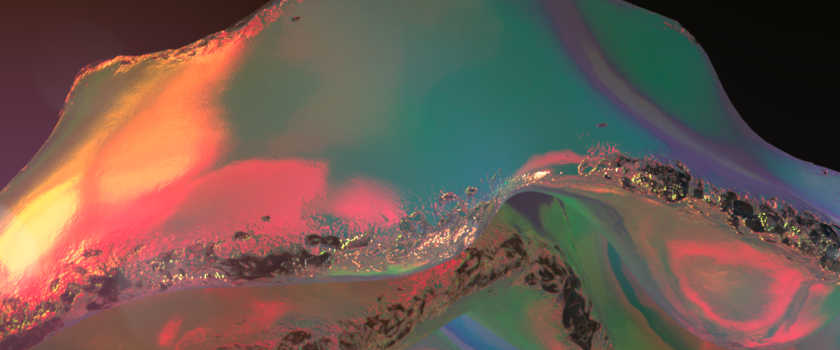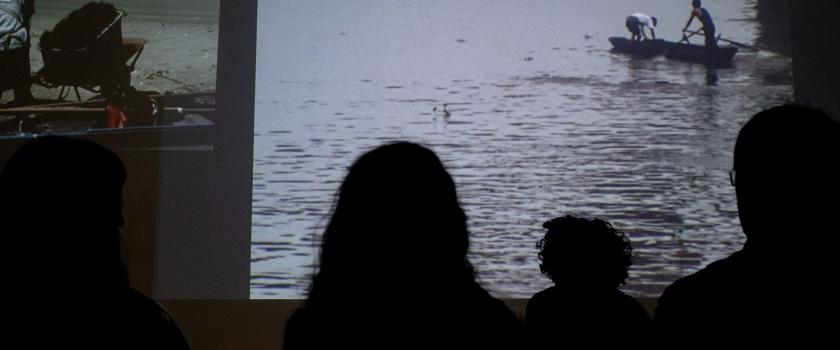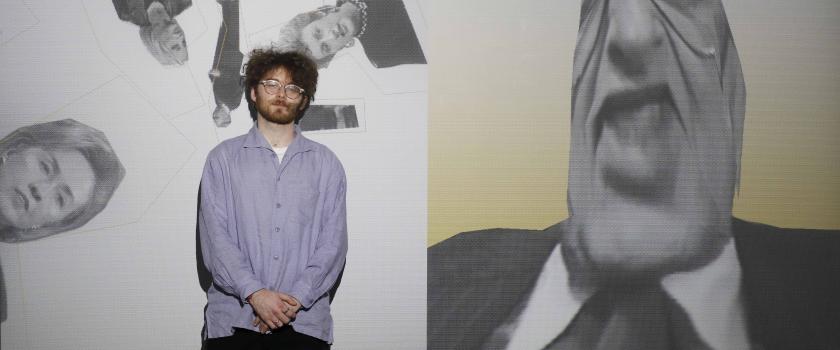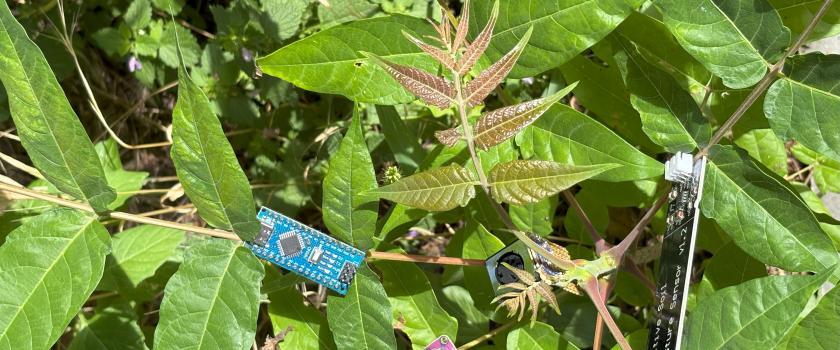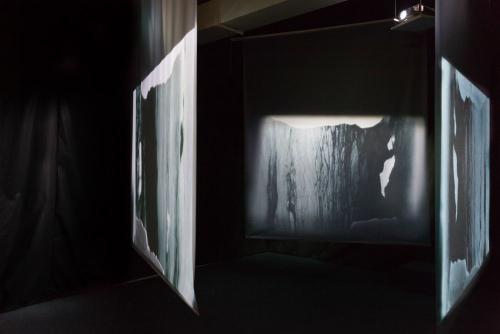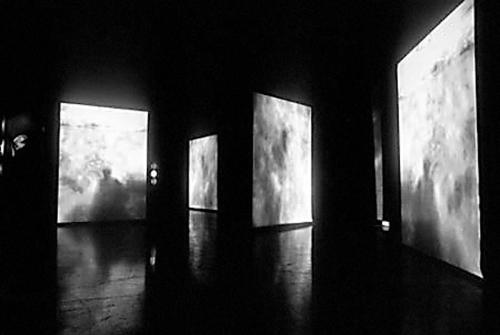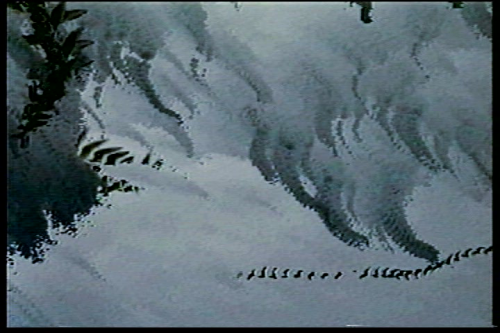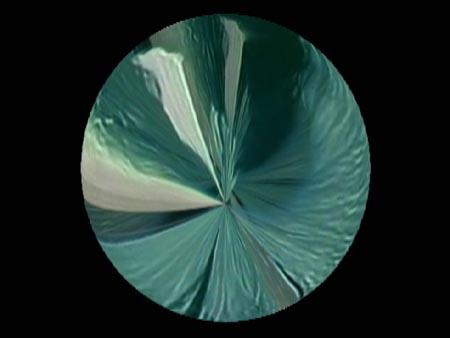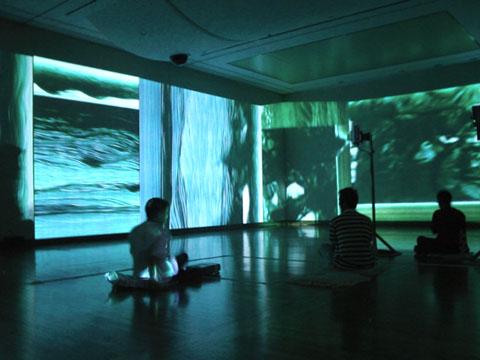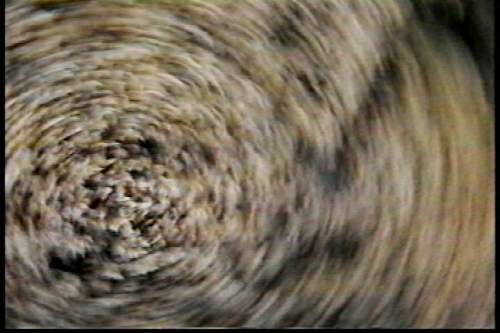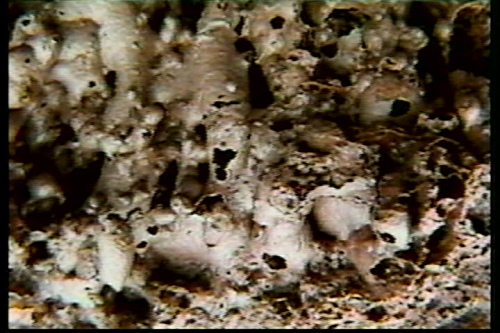Orphistic Landscapes in Steina’s Video works
Selection of videos – March, 2019
Steina returns regularly at least since the 1980s to her native Icelandic landscape with a video camera. Many of her video works are directly inspired by the nature of the “Island of water and fire.”
Borealis, 1993
A Projected Video Environment
Borealis is one of Steina’s most renowned video works; it is a multi-screen video piece that features images form Iceland. The piece was finished in 1993. Steina grew up in Iceland by the Aurora Borealis and was surrounded by volcanoes, geysers, and other powerful natural phenomena.
Borealis explores the powerful and majestic element of water. Steina is concerned with creating an environment in this piece rather than simply a singular work. This multi-screened piece has been likened to players in a quartet. The water is shown flowing, crashing and swelling in harmony with the audio element and creates a symphony. The images consist of coastlines and rivers in Iceland. Steina transforms these images by creating close-up views and flipped perspectives. In Borealis, Vasulka establishes a relationship between the visual and sonic elements of nature.
The piece is comprised of four freestanding transparent screens that display moving images as well as mirrors and projectors that disseminate these images. The images become visible on both sides of the screens creating eight total images. The viewer is surrounded by sounds and moving images of water, rocks and confronted with the power of these natural elements. The images purposefully confuse our perception, as the water is shown to flow in reverse returning to the source and the detailed surface textures do not obviously reference the element.
Later in life Steina Vasulka moved to New Mexico and continued to draw inspiration from the environment. She is not known for romanticized depictions of nature but rather she is concerned with the influence of humans on the geographical and geological conditions as well as with textures and aesthetic details of the environment. The viewer’s experience is that of a traveler and the projections help them to have a sense that they are in a new natural environment or a virtual environment. Like a map maker Vasulka documents the structure and image of each natural site.
http://www.artelectronicmedia.com/artwork/borealis http://www.ntticc.or.jp/en/feature/1998/The_Second/Works/borealis.html
Orka, 1997
The audiovisual installation Orka expresses motion, a motion that runs counter to the laws of physics and the “frame-bound image”. The overriding formal orchestration of image events and their relatedness resembles the composition of a visual symphony. Steina describes the roots of her visual thinking, expressed in paradoxical events and free-floating imagery: “Since my art schooling was in music, I do not think of images as stills, but always in motion. My video images primarily hinge upon an undefined sense of time with no earth gravity. It is like a duty to show what cannot be seen except with the eye of media: water flowing uphill or sideways, upside down rolling seas or a weather-beaten drop of a glacier melt.” This approach to expanding perceptual expectations also has an immersive dimension: when the single-channel videotapeOrka is set up in a three-channel video environment, the visual material is shown on translucent screens that are equally intense on both sides. “The idea is that perhaps the audience could feel a part of this creative trance, living for a moment in a mental world where they have never been".
from ”Yvonne Spielmann © 2004, FDL
ORKA (Icelandic for "force") juxtaposes two of the archetypal forces of transformation, water and fire. It is scarcely possible to imagine a more appropriate subject for the artist's contemplation upon the flux of time than the two forces which are virtually synonymous with the unbridled flow of natural energy in Iceland: water and fire, sub-glacial eruptions, glacier bursts cascading over black sands, waterfalls, glacial rivers. Steina has collected video recordings of Iceland on her travels around the country over the past twenty years. She likes to stand with her video camera on bridges, above waterfalls or on top of sheer cliffs, pointing it down into the swirling waters. Her angle of vision is the bird's eye view. Among the simple, but effective camera techniques which she uses are turning the camera upside down, shooting with a moving camera, or using two cameras simultaneously. The fruits of such "video hunting trips" are the raw material which the artist works from in her Santa Fe studio. Almost every single frame in ORKA is manipulated in one way or another, by increasing or decreasing the recording speed, flipping images, shifting colors, changing direction. By playing images in reverse, the artist breaks up the linear progress of time.So time is inherent not only in the subjects of Steina Vasulka's works of video art, but no less in their forms and presentation. One of her main technical characteristics is soft edge keying, which involves creating a rich or soft texture in merging the images, so that it is impossible to say where one ends and another begins. (derived from the text by Audur Olafsdottir, Venice Biennale, 2000)
Idea of the North, (... of the North), 2001
A Video Matrix
Apart from the sheer size of Seven Worlds, Steina's fifteen large video monitors stacked in three rows gave the show its dazzling keynote image. Each screen projects one or another of several variations of a computer-generated sphere, each one a transparent globe or oculus in constant kinetic and acoustic permutation. The images evoked in the glass orbs range from microscopic to macroscopic: micro-organisms, crystalline sphaeraphides from plant cells, steep canyons, ocean surf, vast seas on a distant planet's surface. The spheres float unmoved and unmoving as their surfaces transform, at times turning inside out; or they spin slowly in place about an imaginary axis.
The simultaneous projections of these kaleidoscopic globes produce the monumental effect of some distant galaxy, yet the breadth, beauty, and kinetic rhythm of these patterns, modeled on nature and natural process, create a harmony of the spheres whose reference is always the earth - as in fifth largest Planet in the solar system. For all the visual draw of these stunning images, the result is more than mesmerizing. Vasulka succeeds in transforming the electronic moving image into video metaphor. It is almost immaterial whether viewers' thoughts turn to global warming, the Kyoto Accords, or the first time they peered through a telescope. What is material is the act of thinking: the movement from passive response to active reflection.
— Richard Tobin, July 2002
Orphic landscape of Steina Vasulka
Orphism, also called Simultaneism, in the visual arts, a trend in abstract art spearheaded by Robert Delaunay. It derived from Cubism and gave priority to light and colour. The movement's name was coined in 1912 by the French poet Guillaume Apollinaire
Steina is at least since the 1980s returning to her native Icelandic landscape regularly, and many of her videowork are inspired directly or indirectly by the northern nature of the "island of water and fire". As if this archaic landscape, the landscape without trees and surrounded by the omnipresent water increasingly embeded into her ouvre. The output may be audiovisual installations, sometimes origined in single-channel video. The series of Icelandic reminiscences consists mainly of a 2-channel installation Borealis (1993), 3-channel Orka (1997), Nuna (1999), multi-channel Mynd (2000). .... of the North (2001) is featured on fifteen monitors and Moss and Lava (2001) is two screen. All the works are based on analogue (later digital) video and audio documentary material and are composed from materials recorded by Steina during her regular hikes across Iceland.
The first structural Icelandic landscape video painting isBorealis. Its name is probably derived from the residential projectBorealis IV in which Steina took part in 1993. TheNordic Councilinvited several internationally active artists to a 5-week stay in Iceland, and in the spring of 1993 a series of residences took place. Among the invited guests were besideSteina Vasulka as wellFinnbogi Petturson, SwissRoman Signer,Tatsuo Myiajima from Japan,Giovanno Anselmo from Italy, orMaaria Wirkkala from Finland. Each of these - at least on the internet available documents - received a grant of 10,000 FM (Finnish Marks) as a fee for a new work of art inspired by their stay on the island.
....
Steina works similar way as with video with sound: the audio is (probably) captured with the microphone attached directly to the camera, then is it adjusted it and synchronized with the video in PC so that the texture of the immersive sound composition is complementary to the restless and volatile image sequences. The musicality of "audio-visual environments" is based on the magmatic stream of flowing luminous and subdued images, hovering around the viewer in dark space projected on semi-transparent canvases.
Perhaps the most radical transposition of the Icelandic landscape documentary video is The Idea of the North, or (… of the North) 2001. Here, Steina uses a set of large-format Trinitron monitors to accommodate spaces of different sizes. Videos sequences are distorted (edited) into round or circle shapes. A constellation of moving, rotating, turbulent and synchronized planets emerges from the dark space, as if exploring their arteficial surroundings through the lens of the fish eye. The "simple" effect of changing perspective and preview has a surprisingly strong impact of simulating the othernes or "non-human" perception mode. As if an realm of organic microstructures, biosensors, through the eyes of the Icelandic landscape itself is watching the viewer while he came to observe it via the artist's eyes. The motives of the circle and sphere as the archetype of the original cosmical wholeness appear in Vasulka's work from the beginning of her work in the 70's.
In the "Idea of the North" installation, (Steina probably refers here to the famous Glen Gould radio play), she expresses her emotive relationship towards the premordial, orphic, mysterious and miraculous landscape of the island where she was born 79 years ago.
Miloš Vojtěchovský
